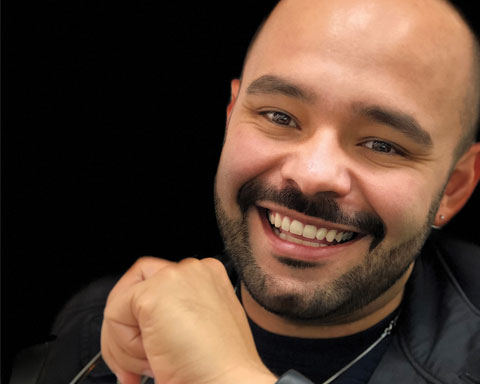Walacy Ferreira: Sales & Marketing Manager – Infinity Fitness & Spa
Where did you first start your employment?
“When I was 9-10 years old my dad used to take me on his sales adventures and I did also go helping mum at work before and after school as most of the time she didn’t have anyone to leave me with. However, my first “Official” employment was back in Brazil in 2002 as an administrative assistant.”
How would you describe yourself?
“I am a people-person, ambitious, driven, positive, thankful, grateful, easy going and a bit complicated too.”
Which person has been the biggest influence in your life?
“MUM. She taught me how to be a hard worker, independent, kind, humble, honest and grateful. Also, I will never forget when she told me in a very difficult period of our lives that ‘Life is not going to be easy on you sometimes, however it’s up to you to decide how to face it and how to move forward… be wise…”
What’s the best book you’ve ever read?
“There is no such thing as a hopeless situation. Every single circumstance of your life can change!”
The Secret – By Rhonda Byrne
What makes you laugh?
“Basically anything. It’s embarrassing sometimes.”
What’s your greatest ambition?
“To run my own successful business.”
What’s your favourite music track?
“It all depends on my mood, right now answering this questions I would say: Roxie – Song by Renée Zellweger – Chicago Musical. (Ps. Usually I do change Roxie for Wally.)”
What’s your biggest fear?
“To lose my mum, for her to not longer be around.”
If you could change something about yourself, what would it be?
“I would like to able to take bigger risks without thinking too much.”
What’s the best country you’ve ever visited and why?
“My very own country Brazil. After so many years in sales traveling around my country for work, plus 7 months travelling as a tourist with my partner in 2015, I must say that I was and I am still impressed by the wonders that my country has to offer, which as Brazilians sometimes we don’t even realise.”
Have you had any embarrassing moments?
“Yep, many. Usually when I laugh when I shouldn’t.”
Which word or phrases do you most overuse?
“OMG, really, for example and yaaass!”
Do you have any regrets?
“Yes, not have taken my degree while I was still in Brazil.”
What keeps you awake at night?
“Being treated unfairly and “big little lies”, if you know what I mean.”
What is your idea of perfect happiness?
“Not trying to be perfect it’s a good start. Just be kind, humble, work hard and spend time with those you love, respect people as they are and don’t take anything for granted. This is happiness for me.”
What’s the best experience you’ve had in life so far?
“To have had a chance to live abroad, explore Europe, US and to meet so many great people on the way.”
If you didn’t live where you are currently located where would you like to Live (Money no object)?
“In a beach house where I could open my living room door and walk through my garden, then reach the sea with only a few footsteps, plus, hear the sound of the sea from my bedroom wouldn’t be bad at all. (working on it).”
What person historic or living would you most like to meet?
“Roger Federer is an inspiration not just for me but for many people I think, he is focused, smart, strong, persistent, humble, kind and so many other qualities that an opportunity to meet him would be a dream come true.”
If you could change one thing about Gibraltar what would it be
“I would like to introduce “Aqua Taxis” to Spain and Morocco for a quick day trip. Wouldn’t that be a thing?
What is your favourite hobby or interest
“Travelling! No question, wish I could do go more often. #addicted.”










